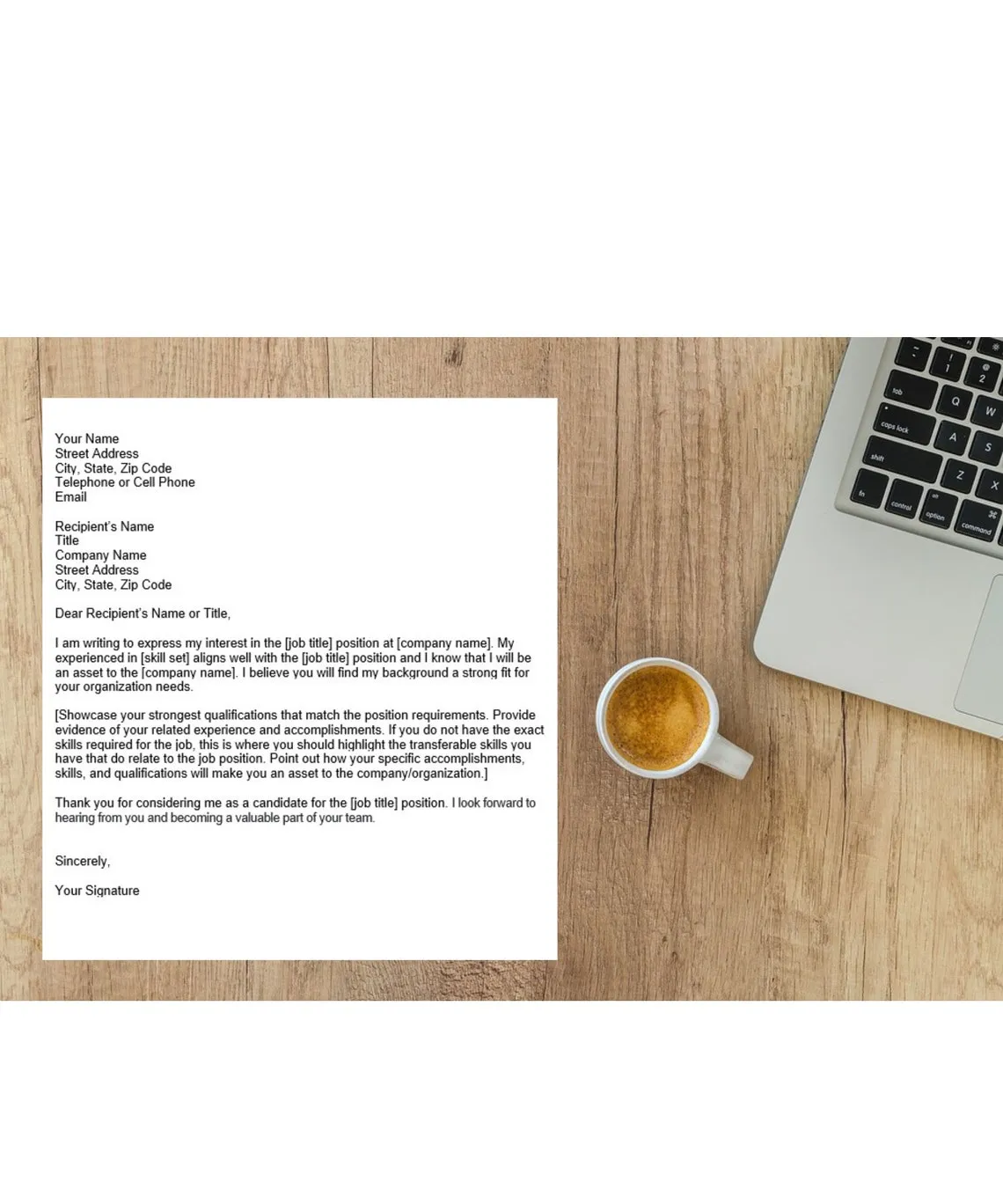Why You Need an Easy Cover Letter Sample
In today’s competitive job market, a well-crafted cover letter can be the key to unlocking your dream job. But writing one can seem daunting. That’s where an easy cover letter sample comes in handy. It provides a template, guiding you through each step, ensuring you make a strong first impression on potential employers. A cover letter is your opportunity to introduce yourself beyond the confines of your resume, showcasing your personality, skills, and enthusiasm for the specific role. Without a compelling cover letter, your application might get overlooked, even if you possess the necessary qualifications. With an easy cover letter sample, you can save time, reduce stress, and increase your chances of landing an interview. It’s your secret weapon in the job search process, helping you stand out from the crowd and demonstrate your genuine interest in the position.
What is a Cover Letter and Why Does It Matter
A cover letter is a formal document accompanying your resume when applying for a job. It serves as an introduction, providing context and highlighting why you’re the perfect fit for the position. Unlike a resume, which presents a summary of your skills and experiences, a cover letter allows you to elaborate, demonstrating your understanding of the company and your passion for the role. A well-written cover letter can significantly increase your chances of getting an interview. It shows you’ve taken the time to personalize your application, demonstrating genuine interest and attention to detail. Furthermore, a cover letter provides an opportunity to address any potential gaps or weaknesses in your resume, such as a career change or a period of unemployment. By using an easy cover letter sample, you can ensure your letter is professional, tailored to the specific job, and effectively communicates your value to the employer. This is your chance to shine.
Cover Letter Structure and Formatting
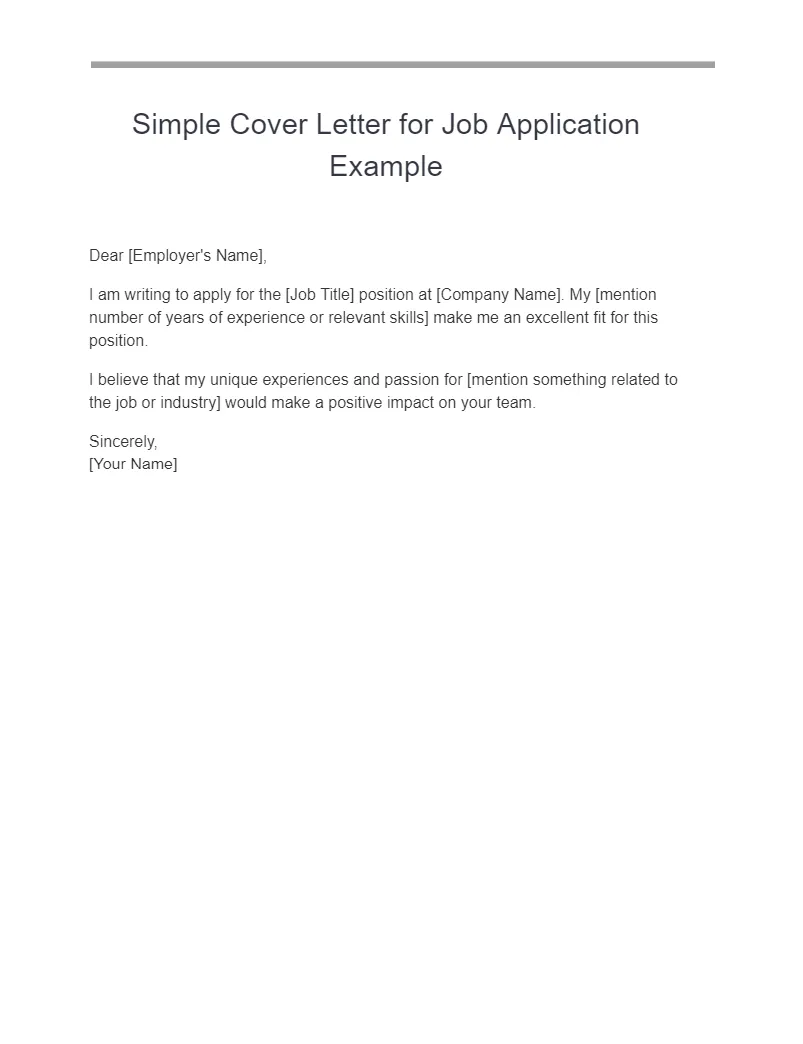
A well-structured and formatted cover letter is crucial for making a positive impression. Start with your contact information at the top, followed by the date and the employer’s contact details. Use a professional and easy-to-read font like Times New Roman or Arial, with a font size of 11 or 12 points. Maintain consistent formatting throughout the document, including spacing and alignment. Divide your letter into logical paragraphs, each addressing a specific point. Keep your letter concise, aiming for a maximum of one page. Proofread carefully for any grammatical errors or typos. Utilize an easy cover letter sample to ensure your structure and formatting is on point. Your cover letter should follow a standard business letter format, including a formal greeting, a compelling body, and a professional closing. A well-formatted letter shows you pay attention to detail, a highly valued quality in any profession. Remember, the goal is to make it easy for the hiring manager to read and understand your qualifications.
Your Contact Information
Begin your cover letter with your contact information. This typically includes your full name, address, phone number, and email address. Place this information at the top of the page, either left-aligned or centered. Ensure your email address is professional; avoid using nicknames or informal language. Double-check that your phone number is correct and includes the appropriate country code if necessary. This section is crucial as it allows the employer to easily contact you if they’re interested in your application. Make certain your contact information is accurate and up-to-date. Use an easy cover letter sample to see how this information is usually presented. Consider using a simple, clean layout to ensure readability. This section sets the stage for the rest of your letter, establishing your professionalism and attention to detail from the outset. It’s the foundation of your communication with the potential employer.
Date and Employer Contact Information
Following your contact information, include the date and the employer’s contact details. The date should be the current date when you’re sending the letter. Below the date, write the hiring manager’s name (if known), their title, the company name, and the company’s address. If you cannot find the hiring manager’s name, you can use a general title like ‘Hiring Manager.’ Researching the hiring manager’s name demonstrates your initiative and attention to detail. This shows that you are willing to go the extra mile to tailor your application. Ensure the company’s address is accurate. Use an easy cover letter sample to help ensure you have the correct format and structure for these details. Proper formatting shows you’re professional and respects the potential employer’s time. This section is crucial for creating a professional tone and ensuring your letter reaches the intended recipient.
Professional Greeting
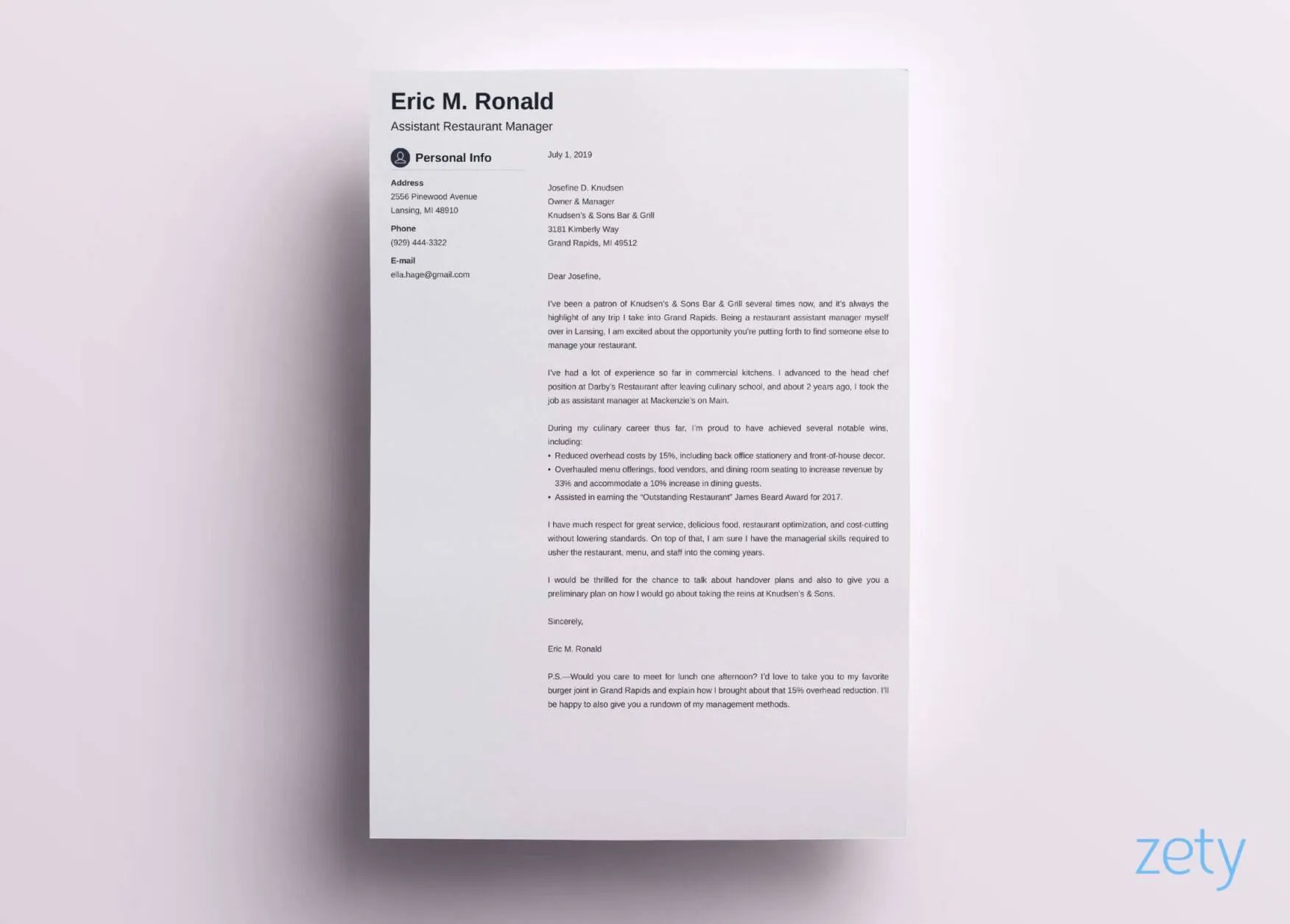
The greeting of your cover letter is your first chance to grab the reader’s attention. Use a professional greeting, such as ‘Dear Mr./Ms./Mx. [Last Name]’ if you know the hiring manager’s name. If you don’t know the name, ‘Dear Hiring Manager’ is a suitable alternative. Avoid generic greetings like ‘To Whom It May Concern,’ as they can appear impersonal. Always double-check the spelling of the hiring manager’s name. Showing that you’ve taken the time to find out the hiring manager’s name demonstrates initiative and professionalism. The professional greeting sets the tone for the rest of your cover letter. Using an easy cover letter sample can provide you with examples of effective greetings. It is important to project a sense of respect and eagerness to connect.
Body Paragraph 1 State Your Purpose
In the first body paragraph, clearly state the purpose of your letter: why you are writing and the specific position you are applying for. Mention where you found the job posting (e.g., company website, LinkedIn). Briefly highlight your most relevant qualifications, skills, or experiences that make you a good fit for the role. Show that you understand the company’s needs and how your abilities can contribute. Demonstrate your enthusiasm for the opportunity. Be concise and focus on the essential information. Use an easy cover letter sample to learn how to do this effectively. This paragraph should capture the reader’s attention and encourage them to continue reading. It lays the foundation for the rest of the letter, showcasing your intention and the value you bring to the table.
Body Paragraph 2 Show Your Skills
In the second body paragraph, delve deeper into your skills and experiences. Provide specific examples that demonstrate how you meet the requirements of the job description. Quantify your achievements whenever possible (e.g., ‘increased sales by 15%’). Tailor this paragraph to align with the specific requirements mentioned in the job posting. Focus on the skills and experiences that are most relevant. Explain how you have successfully applied your skills in past roles. Use action verbs to describe your accomplishments. Don’t just list your skills; illustrate them with examples. An easy cover letter sample can offer examples of effective skill demonstrations. This paragraph is your opportunity to convince the employer that you have what it takes to excel in the position.
Body Paragraph 3 Express Enthusiasm
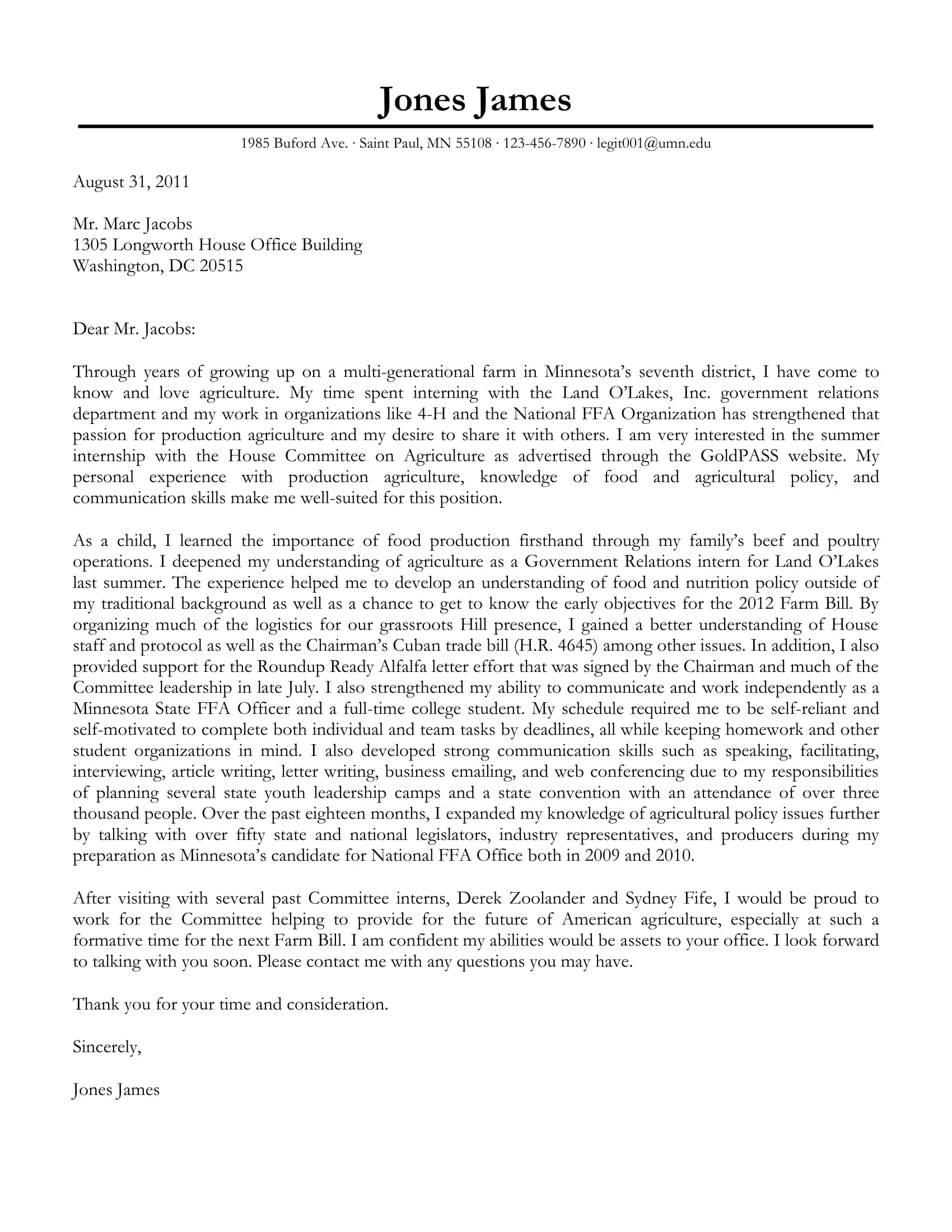
The third body paragraph should express your enthusiasm for the company and the specific role. Explain why you are interested in working for this particular organization and how your goals align with theirs. Show that you have researched the company and understand their mission, values, and recent accomplishments. Mention something that excites you about the position. Demonstrate your commitment to the company and your desire to contribute to its success. Make your passion for the role evident. Use an easy cover letter sample to find inspiration on how to express your enthusiasm. This paragraph helps the reader understand that you are genuinely interested in the role and motivated to be part of the team. It is also a chance to highlight your company research.
Closing the Cover Letter
Your closing paragraph should summarize your interest in the position and express your eagerness to learn more. Reiterate your key qualifications and reiterate your value to the company. Thank the hiring manager for their time and consideration. Include a call to action, such as stating that you look forward to hearing from them soon or that you are available for an interview at their earliest convenience. Keep it concise and professional. Avoid any overly casual or informal language. Use an easy cover letter sample to see various closing statements. This helps you leave a lasting positive impression and encourages the hiring manager to take the next step, increasing your chances of moving forward in the hiring process.
Formal Closing
Choose a professional closing, such as ‘Sincerely,’ ‘Best regards,’ or ‘Yours sincerely.’ The closing should align with the tone of the rest of your letter. Avoid overly casual closings like ‘Thanks’ or ‘Best.’ Make sure that the closing is followed by a comma. Choose a closing that best fits the overall tone and style of your letter. A formal closing provides a final impression of professionalism and courtesy. Using an easy cover letter sample can help guide your closing choices. It’s a simple but important detail that contributes to the overall impact of your cover letter. The closing should leave a lasting impression that underscores your professionalism.
Your Typed Name and Signature
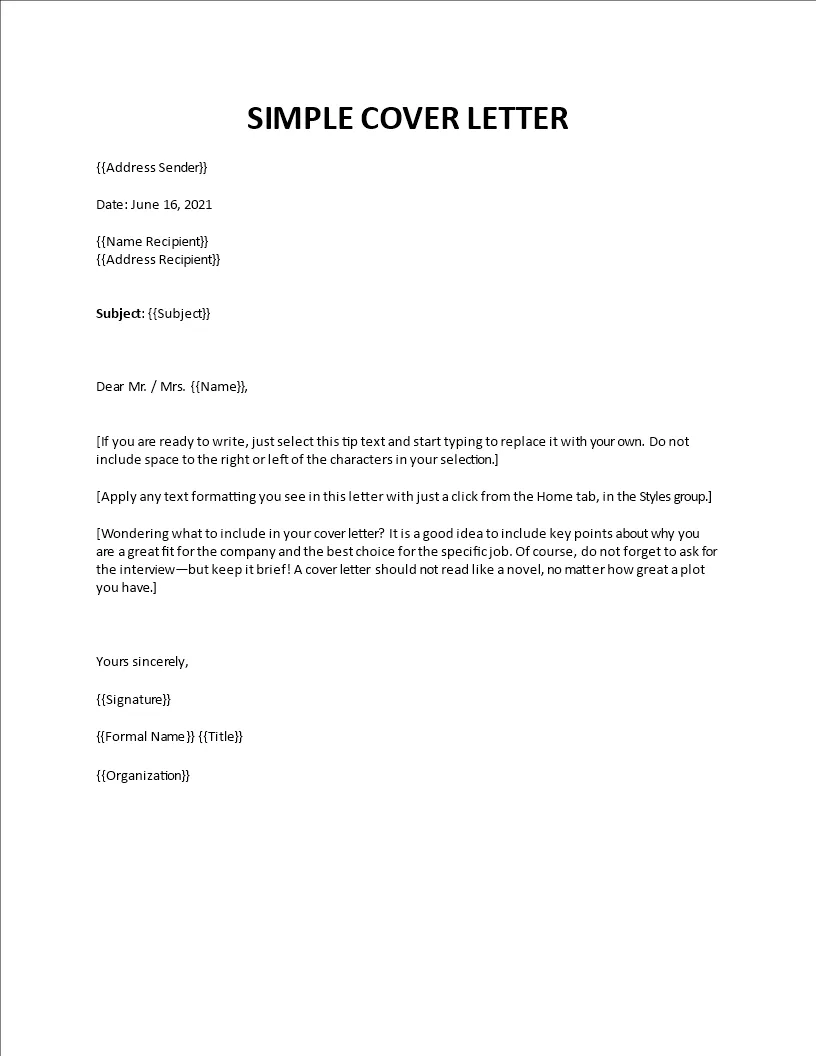
After your closing, leave a few lines of space for your signature. Type your full name below the space. If you are submitting a digital cover letter, you can simply type your name. If printing and mailing the letter, sign your name in ink above your typed name. Ensure your signature is legible. Using an easy cover letter sample gives you the format for the signature and typed name. Your typed name provides the final confirmation of your identity, and the signature adds a personal touch that reinforces your interest and enthusiasm for the role. This section finalizes your cover letter, completing the process and preparing it for submission.
Review and Proofread Your Cover Letter
Before submitting your cover letter, carefully review and proofread it for any errors. Check for grammatical errors, typos, and formatting inconsistencies. Ensure that your contact information is correct. Verify that the company’s name and the hiring manager’s name are accurate. Read your cover letter aloud to identify any awkward phrasing or sentences. Ask a friend or family member to proofread it for you. A flawless cover letter demonstrates your attention to detail and professionalism. Mistakes can create a negative impression, so take the time to review. Using an easy cover letter sample provides a benchmark for the writing style. Your effort to create a polished cover letter will make you appear much more professional.
